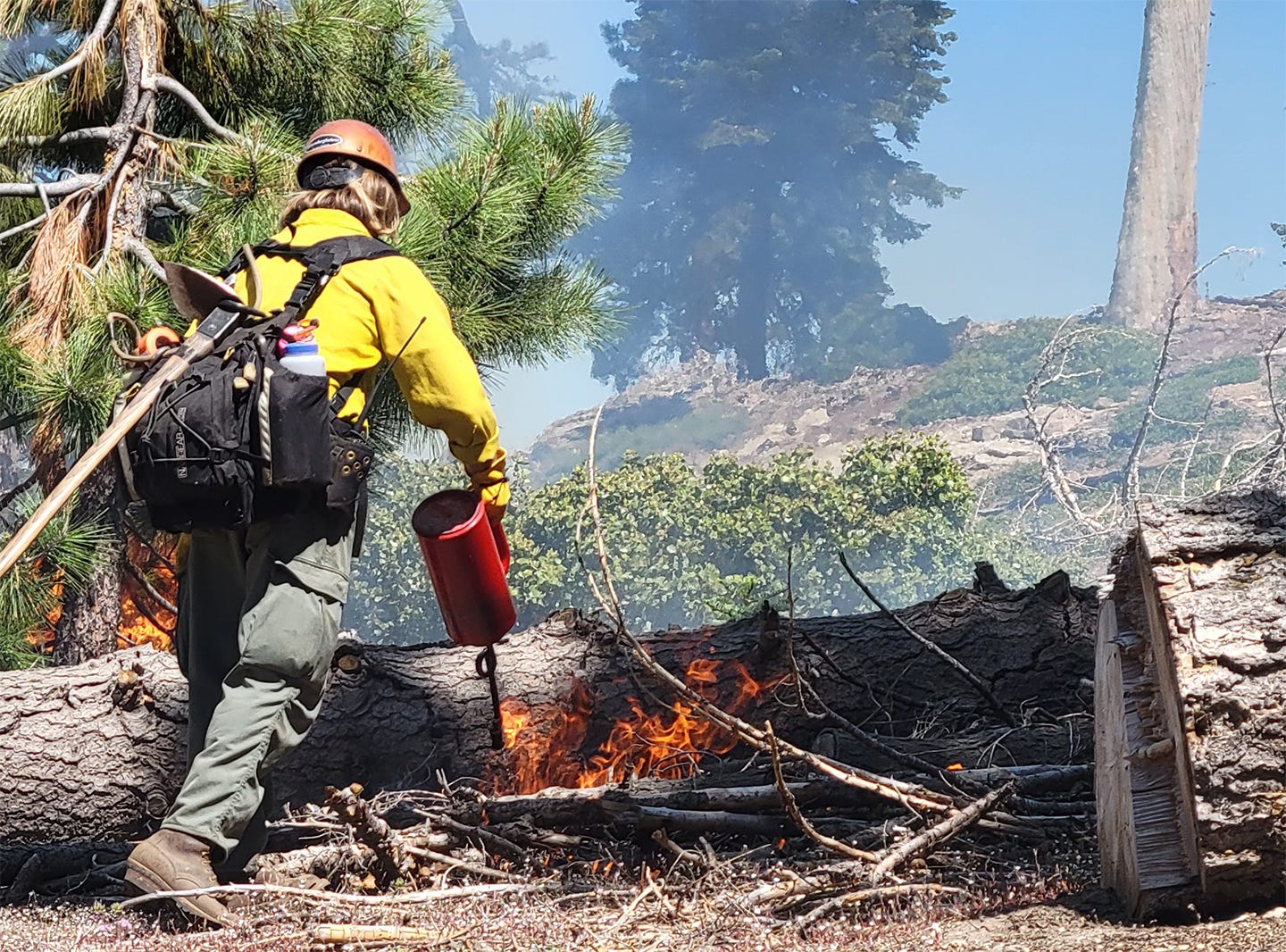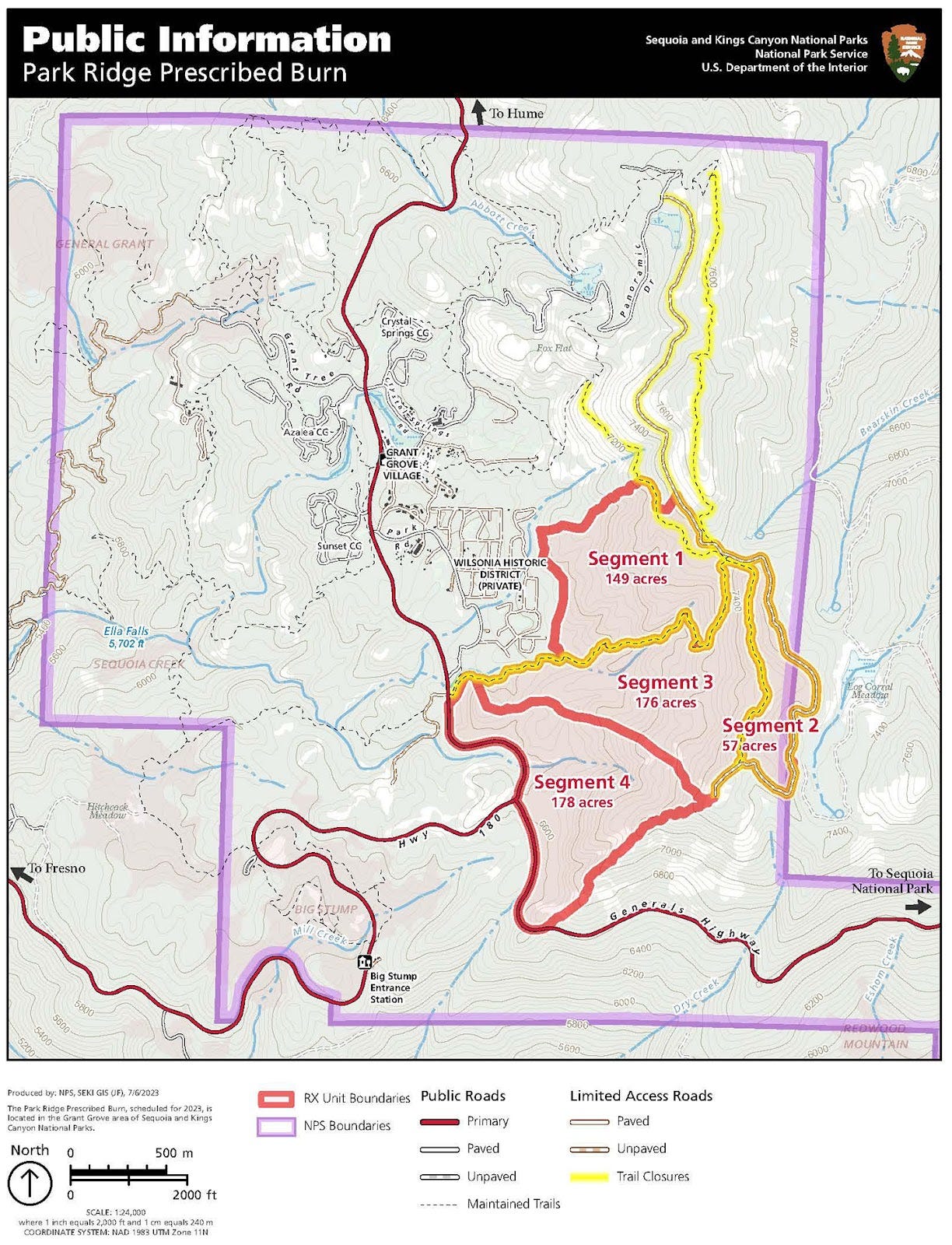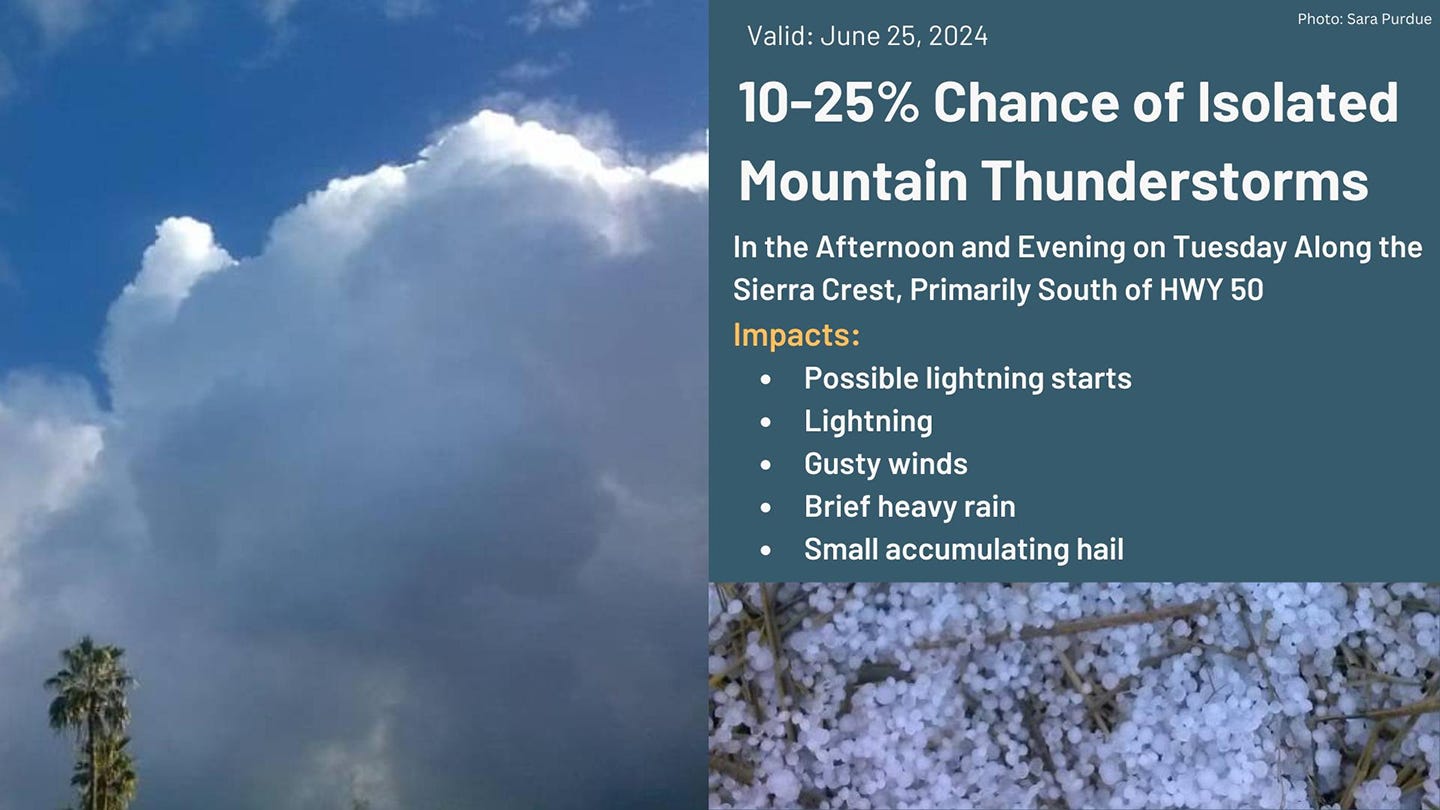Firefighters setting fires in Kings Canyon National Park
'A prescribed burn is a lot like paint-by-number'
Volume 2, Number 57 - Monday, June 24, 2024
Published every Monday and Thursday

Perspective
WE CALL THEM FIREFIGHTERS. According to vocabulary.com, “The word fireman is older than firefighter, which first appeared in the late 19th century, and for a long time, it was much more commonly used. These days, it's more accurate to use firefighter, since men and women both work for fire departments battling fires.”
But why do we call them firefighters when, as in the photo above, they’re starting fires, not trying to put fires out?
After a recent newsletter focused on prescribed fires (HERE), reader Gary Adest wrote:
Time, I think overdue, to stop calling wildland fire mgmt ‘firefighters.’ That might be reserved for structural fires. Firefighting, per se, got us where we are, won’t get us where we need to be, and continues the production at-all-costs mindset.
Adest has a point. Are these folks not actually wildland fire managers?
Perhaps a case can be made that prescribed fire is fighting fire because one of its purposes is to prevent conflagrations — fires that, if we're honest, cannot be fought but are instead managed to various degrees.
For now, though, firefighter is the word, and we have an update this morning from the folks at SEKI — Sequoia and Kings Canyon National Parks — about their latest prescribed fire, Park Ridge Prescribed Burn, in the Grant Grove Area of Kings Canyon National Park.
According to Inciweb, the Park Ridge Prescribed Burn is 560 acres located along the main ridge east of General Grant Grove and the Kings Canyon Visitor Center. The burn area has four segments on the western slope of the ridge (see map below). Burning started yesterday and will continue through June 28 if conditions allow.
The park reported that atmospheric and air quality conditions will be monitored and considered in determining acreage to be burned each day and the number of days of ignitions. Air quality information is online at fire.airnow.gov. If you poke around this map in the area of Kings Canyon, you can see there is an air quality impact, which is not surprising.
Here is the Inciweb update from last evening:
Prescribed burn operations were successful today. Firefighters from the National Park Service, with assistance from Tulare County Fire Department, completed a total of 75 acres.
The fire crews were able to establish a solid holding line which will allow crews to continue work tomorrow. Conducting a prescribed burn is a lot like a paint-by-number. First, you complete the lines/edges, and then you can fill in the middle. Fire ecologists on the prescribed burn are seeing great fire effects, meeting project objectives.
Smoke will be visible throughout the evening and firefighters will be monitoring the fire overnight. Ignitions will continue tomorrow (June 24).
According to a June 11 news release from the NPS (HERE), access to the General Grant Tree will not be limited by the burn, but a few trails that enter the burn area — including the Park Ridge Trail — will be closed during ignitions and the burn-down period and will be clearly marked. Trails through Giant Sequoia Groves, such as the General Grant Tree Loop, will not be affected.
And, also from the news release:
Much of the surrounding areas around Grant Grove have faced significant wildfire impacts from the 2015 Rough Fire and the 2021 KNP Complex Fire. One of the main reasons the Grant Grove area itself has not been severely impacted is from the park’s rich history of prescribed burns going back to 1968. This is a mission that the Sequoia and Kings Canyon Fire and Aviation program continues to uphold for both the safety of people and resources.
Wildfire, water & weather update
California Local (HERE) has a piece about fire season beginning with a roar. CalFire’s incident map this morning (HERE) shows lots of success so far in knocking down fires quickly.
It’s officially summer now and hot in the interior of California but still cooler at higher elevations. There’s a chance of thunderstorms in the Sierra tomorrow. The best Sierra Nevada weather forecasts are at NWS Hanford, HERE, and NWS Sacramento, HERE.
Did you know you can comment here?
It’s easy to comment on items in this newsletter. Just scroll down, and you’ll find a comment box. You’re invited to join the conversation!
Thanks for reading!
Giant Sequoia News is on Facebook
EDITOR’S NOTE: The headline previously included the words, “Kings Canyon” instead of “Kings Canyon National Park.” Thanks to a knowledgeable reader for noting that “Kings Canyon” is a specific topographic feature within the larger canyon complex of the South Fork of the Kings River. Specifically, according to the USGS, it comprises the glaciated section of the canyon between Bubbs and Lewis Creeks. And that “Kings Canyon NP” is, of course a much larger geographic feature, which includes the "General Grant Grove Section,” the site of the curent Rx fire project.




The "firefighter" discussion has been percolating around the agencies for a while, back when I was a "Wildland Fire Apprentice" in that area, on the Hume Lake RD of the Sequoia NF (while carrying the designation of "Forestry Technician" lol) - that was 15 years ago.
As for what to call folks involved in prescribed fire, but not wildland suppression duties, I've coined the term "Prescribed Firelighter". Maybe it'll catch on.
The phenology of fire in the Sequoias is such that "early summer" (in the high country anyway) is fairly ideal for a successful burn. Sequoias are a serotinous species and like fire that leaves bare mineral soil - hot enough for the ash to provide nutrient-rich soil for Sequoia seeds to germinate - but not so hot as to volatilize nutrients or render soil hydrophobic.
Smoke of course is a primary concern, but I've posited for years that "no smoke" is simply not an option.
We can burn under conditions favorable for less smoke generation and greater dispersion - or mother nature and human folly can do it under far less favorable conditions such as the regular "summer dome" of high pressure that caps off the SJV and ensures we all marinate in it until the fall rains show up - IF they show up.
I forget what year it was... 13? 14? That we had a couple thousand acre fire way in the back of the Golden Trout Wilderness - in JANUARY.